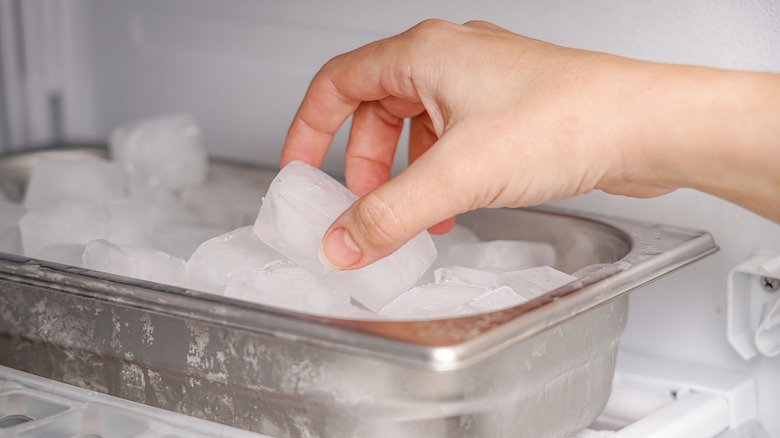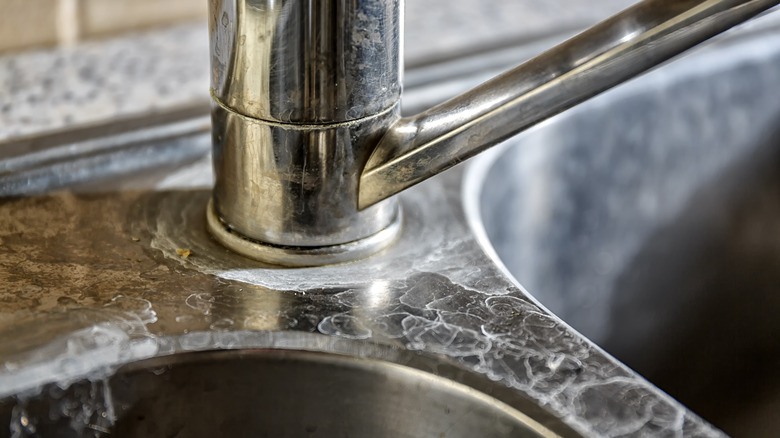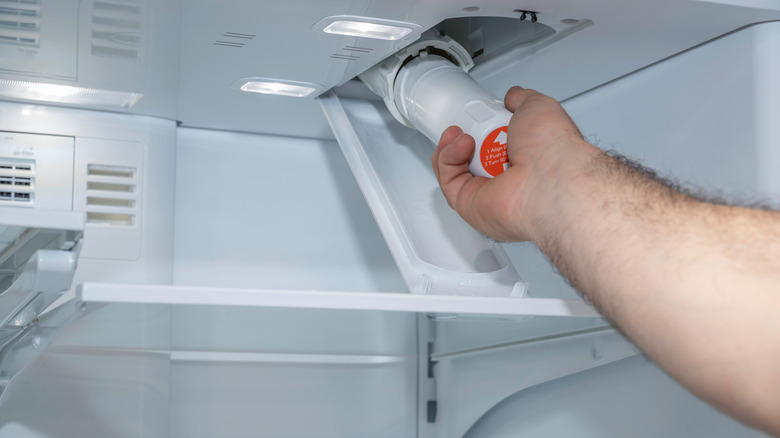Here's What Your Freezer Is Trying To Tell You When Your Ice Cubes Are Gray
Opening your freezer to find gray ice cubes can be incredibly disturbing, especially when you know they weren't that color when they started out as water. Naturally, you may have concerns about the quality of your drinking water or maybe even the cleanliness of your refrigerators. However, it's often the case that gray ice cubes aren't harmful, and the discoloration can result from a few different reasons, including what's in the water and the state of your ice maker.
The first reason is that there may be remnants in the ice maker: Like any appliance that regularly comes into contact with water and food, ice makers are susceptible to the accumulation of dirt and debris over time. This accumulation, primarily composed of microscopic particles and food scraps, can become embedded within the ice formation process, resulting in grayish ice cubes.
Of course, this only applies if you use your ice maker to make ice cubes. If you use plastic trays to make ice cubes and simply fill them up from your faucet, the discoloration may stem from another reason.
Charcoal sediment and hard water
If you use a filter in your sink or your refrigerator has a filter, charcoal sediment from the water filter may be the culprit. Water filters are designed to eliminate impurities and enhance water quality. However, these filters can also act as a source of grayish discoloration, particularly when new or old.
The release of charcoal sediment, a byproduct of the filtration process, can infiltrate the water supply, leading to the appearance of gray ice cubes. Whenever you change the fridge filter, you should run the water for a sufficient amount of time in order to wash out any sediment from the filter.
Sometimes, it's not the refrigerator, ice maker, or filter, but instead is the water itself. It can also be minerals in the water, particularly in hard water, as per Easy Ice. The mineral content of our water can also play a role in the coloration of ice cubes. Hard water, characterized by high concentrations of minerals like calcium and magnesium, can cause ice cubes to develop a grayish tint. This is because these minerals tend to concentrate as water freezes, leaving behind a noticeable trace.
Eliminate gray ice cubes
The first thing to do to eliminate gray ice cubes is to commit to regular cleaning. Maintaining a clean ice maker is crucial in preventing the buildup of dirt and debris that contribute to gray ice cubes. Regularly wash the ice maker with warm, soapy water and a soft brush, ensuring thorough cleaning of all components. Be sure to run more than one cycle after you finish cleaning and discard the ice cubes in order to get all the soap and sediment removed from the system.
Then, make sure you replace your water filters on a regular basis, at least every six months. Follow the recommended schedule for replacing water filters according to your specific filter. It's essential to prevent the release of charcoal sediment into the water. Consult your refrigerator's manual or contact the manufacturer for specific guidelines on filter replacement intervals.
Finally, if you have concerns about the mineral content of your tap water, consider using filtered water to make ice cubes. This will help reduce the concentration of minerals and minimize the likelihood of gray ice cubes forming. If you still have concerns about the quality of your ice or notice an unusual odor or taste, it's better to throw away the ice cubes until you can figure out what is causing the problem. Calling a professional to inspect your fridge may be necessary.


